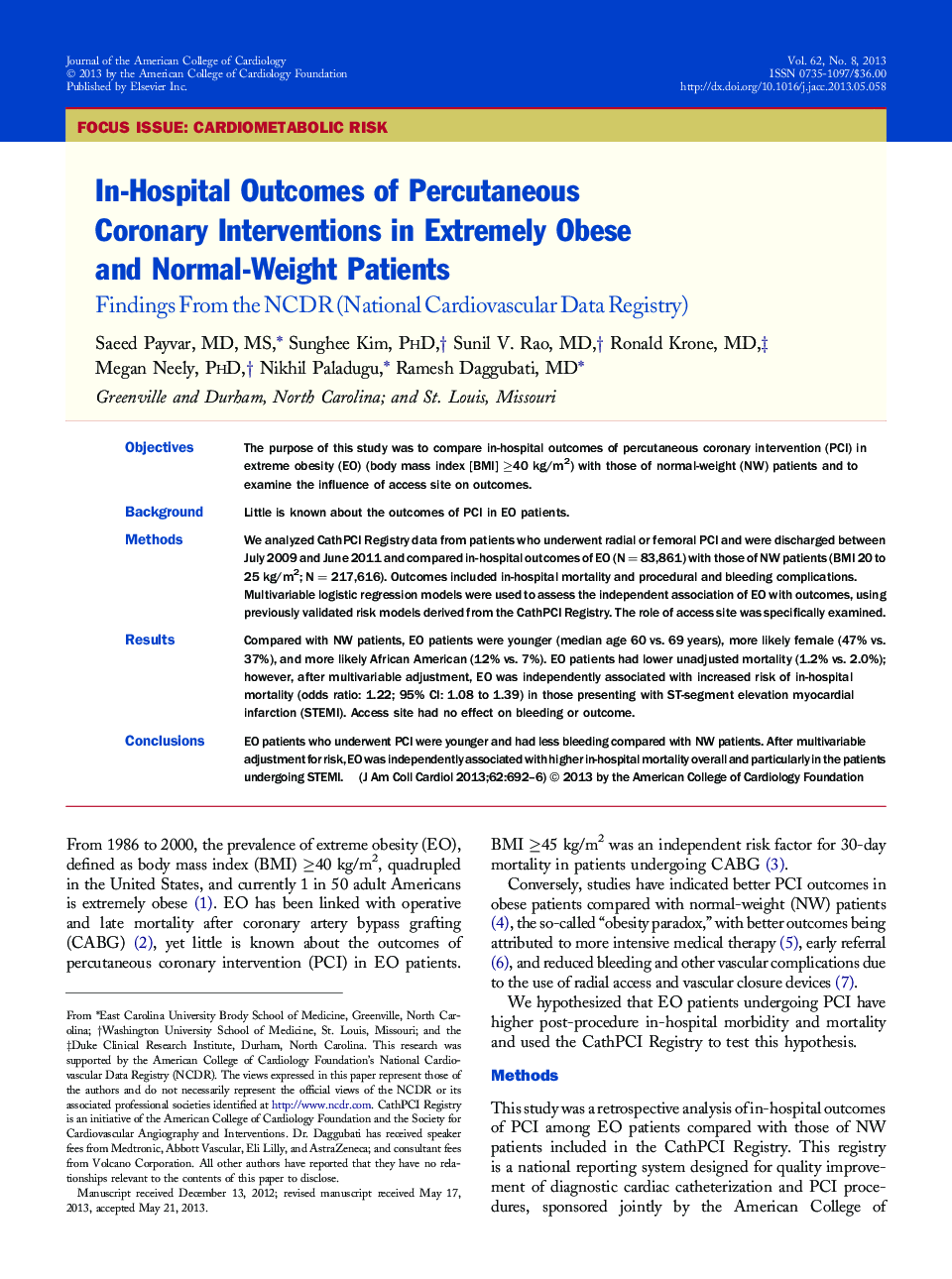| Article ID | Journal | Published Year | Pages | File Type |
|---|---|---|---|---|
| 2945588 | Journal of the American College of Cardiology | 2013 | 5 Pages |
ObjectivesThe purpose of this study was to compare in-hospital outcomes of percutaneous coronary intervention (PCI) in extreme obesity (EO) (body mass index [BMI] ≥40 kg/m2) with those of normal-weight (NW) patients and to examine the influence of access site on outcomes.BackgroundLittle is known about the outcomes of PCI in EO patients.MethodsWe analyzed CathPCI Registry data from patients who underwent radial or femoral PCI and were discharged between July 2009 and June 2011 and compared in-hospital outcomes of EO (N = 83,861) with those of NW patients (BMI 20 to 25 kg/m2; N = 217,616). Outcomes included in-hospital mortality and procedural and bleeding complications. Multivariable logistic regression models were used to assess the independent association of EO with outcomes, using previously validated risk models derived from the CathPCI Registry. The role of access site was specifically examined.ResultsCompared with NW patients, EO patients were younger (median age 60 vs. 69 years), more likely female (47% vs. 37%), and more likely African American (12% vs. 7%). EO patients had lower unadjusted mortality (1.2% vs. 2.0%); however, after multivariable adjustment, EO was independently associated with increased risk of in-hospital mortality (odds ratio: 1.22; 95% CI: 1.08 to 1.39) in those presenting with ST-segment elevation myocardial infarction (STEMI). Access site had no effect on bleeding or outcome.ConclusionsEO patients who underwent PCI were younger and had less bleeding compared with NW patients. After multivariable adjustment for risk, EO was independently associated with higher in-hospital mortality overall and particularly in the patients undergoing STEMI.
